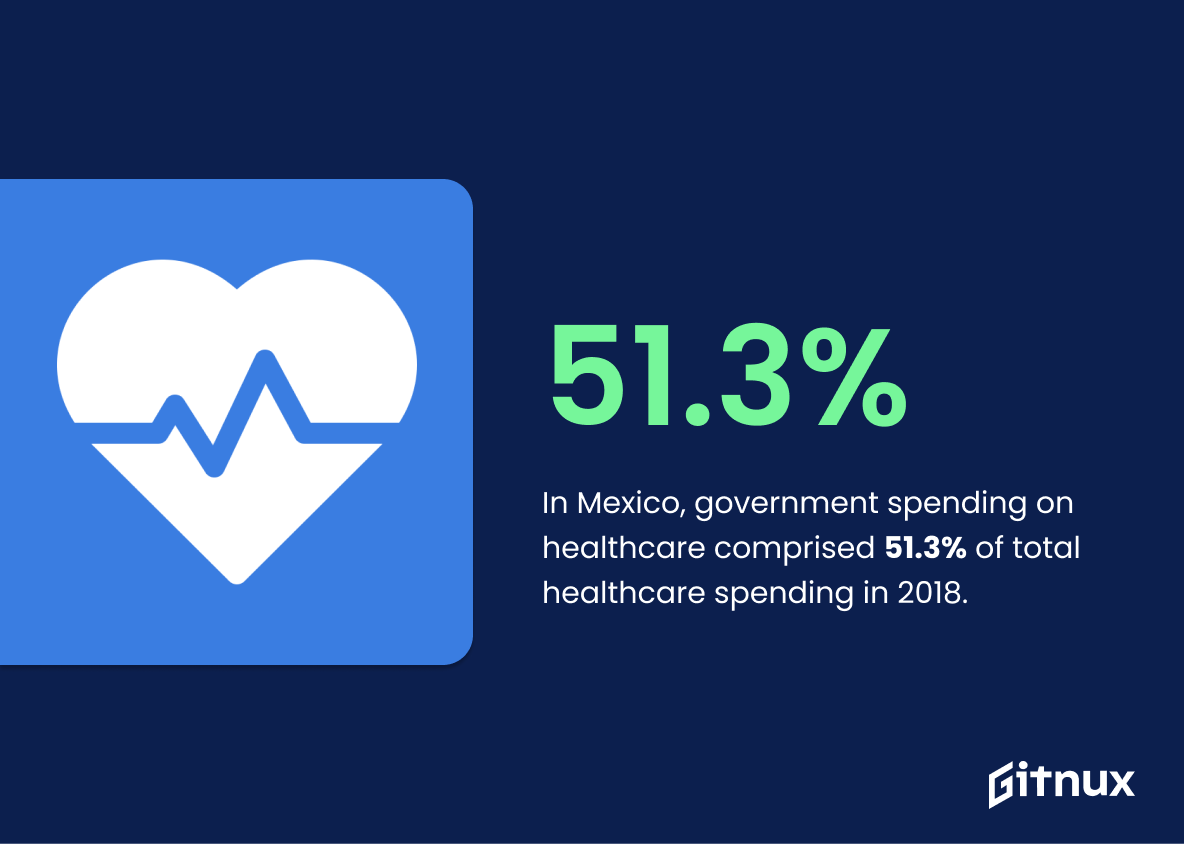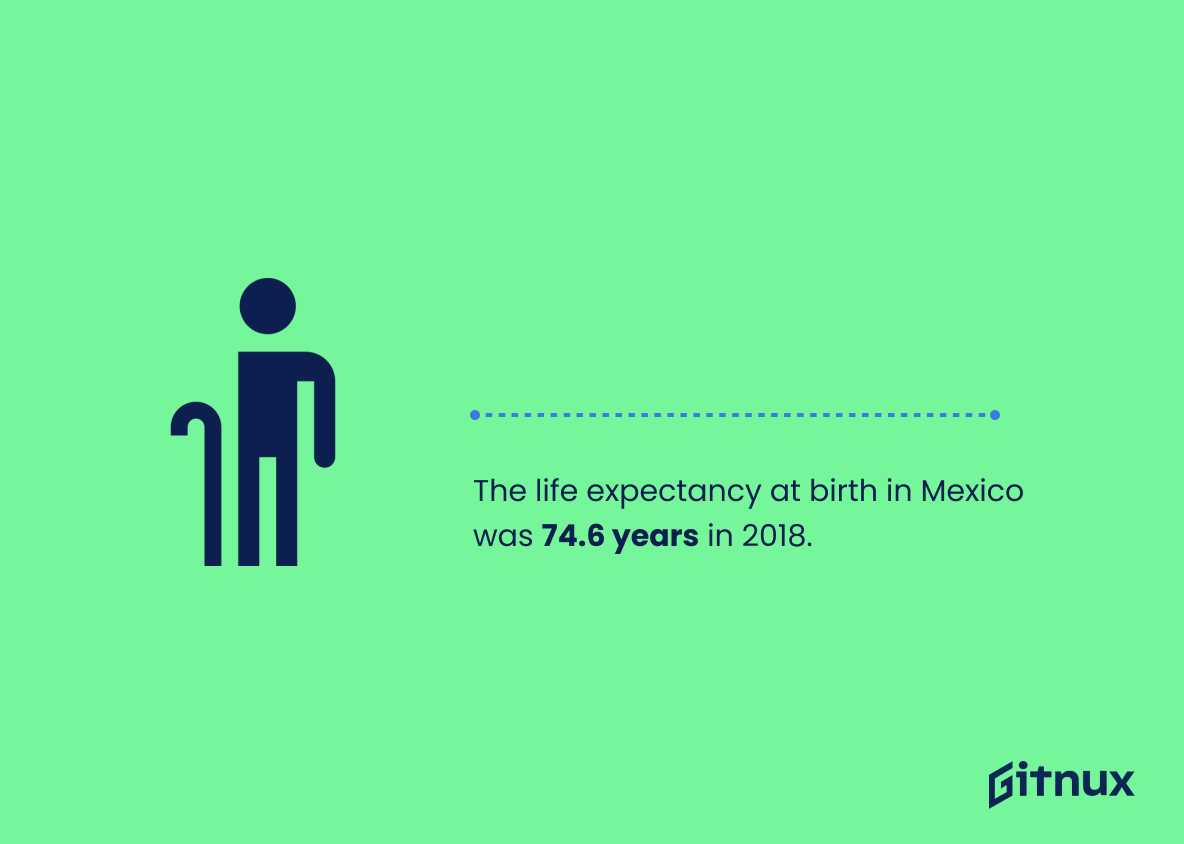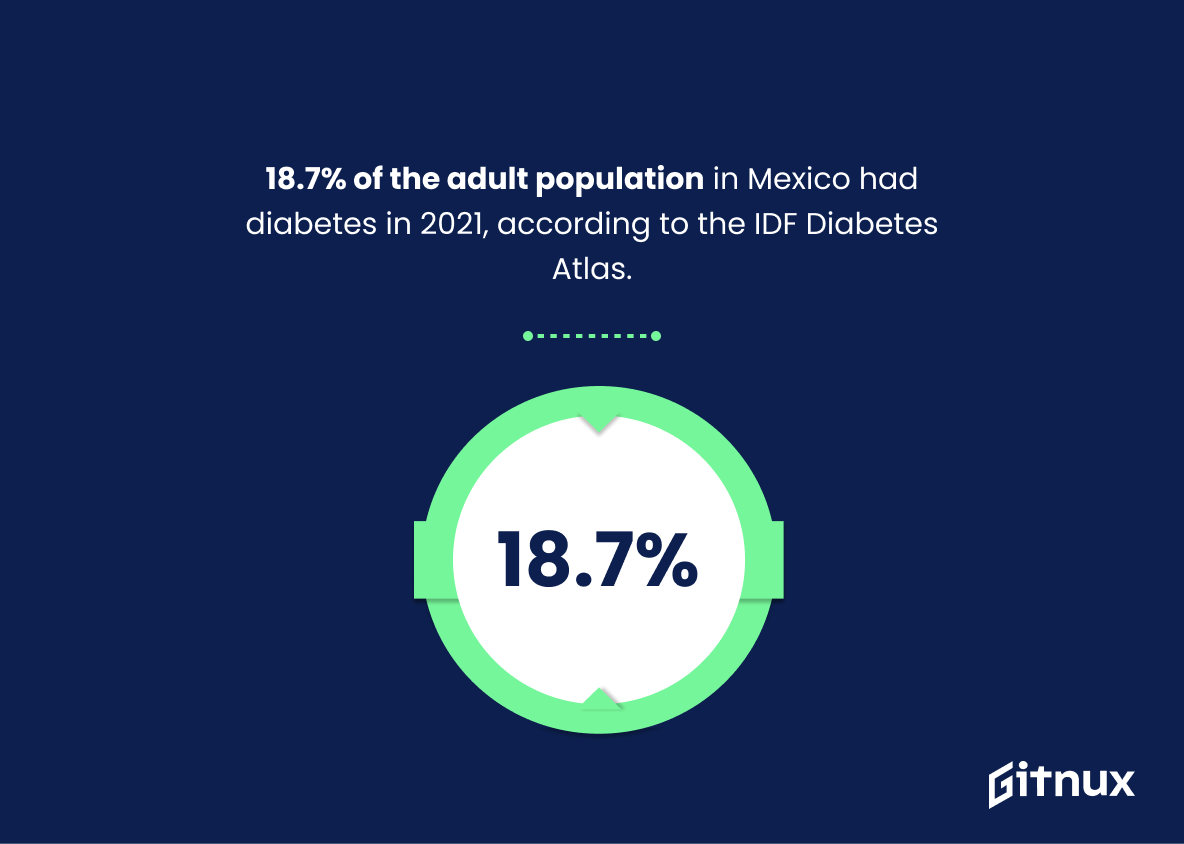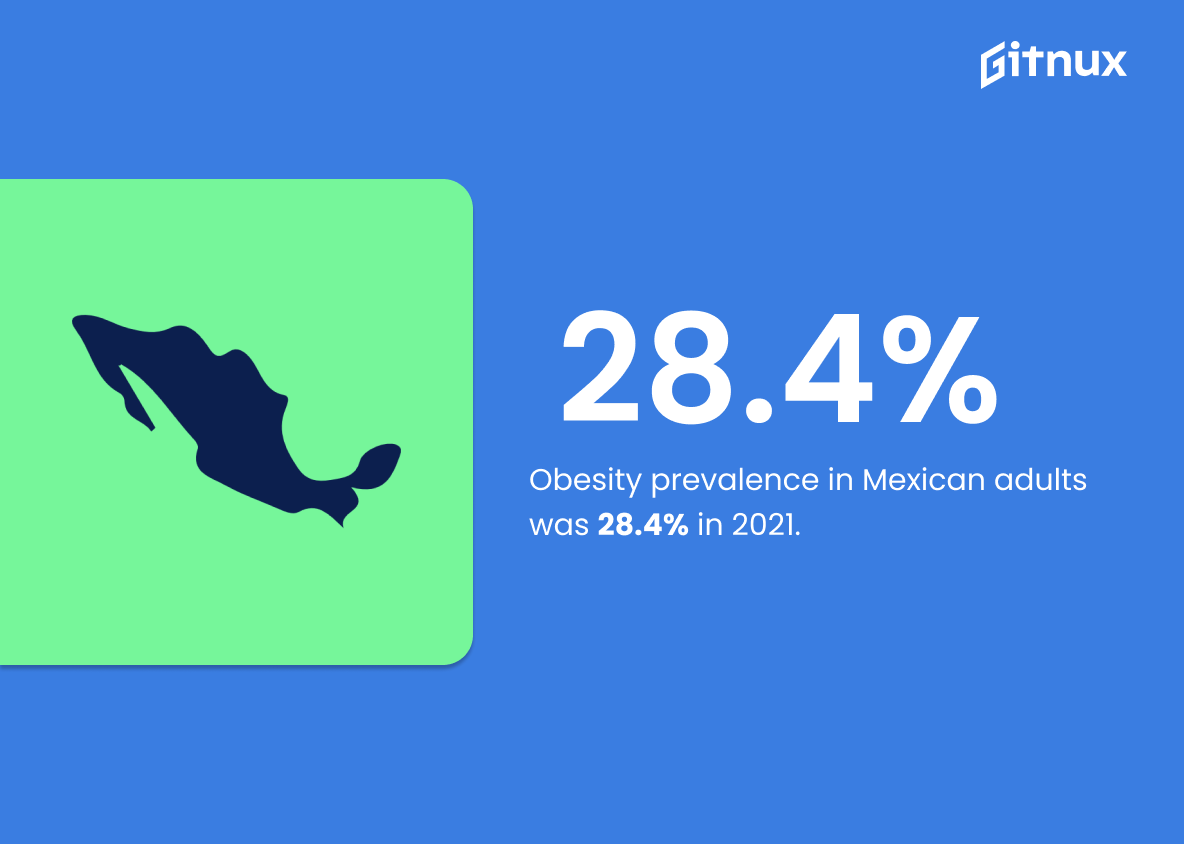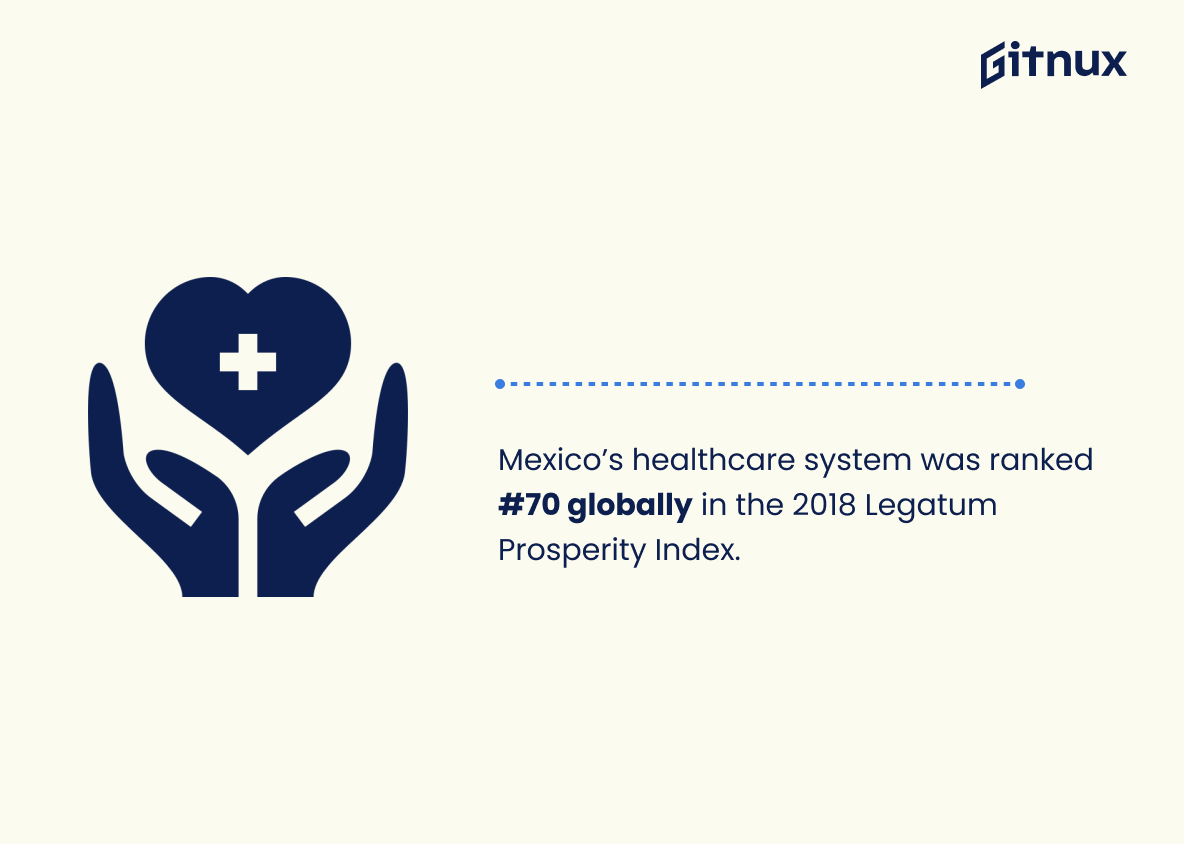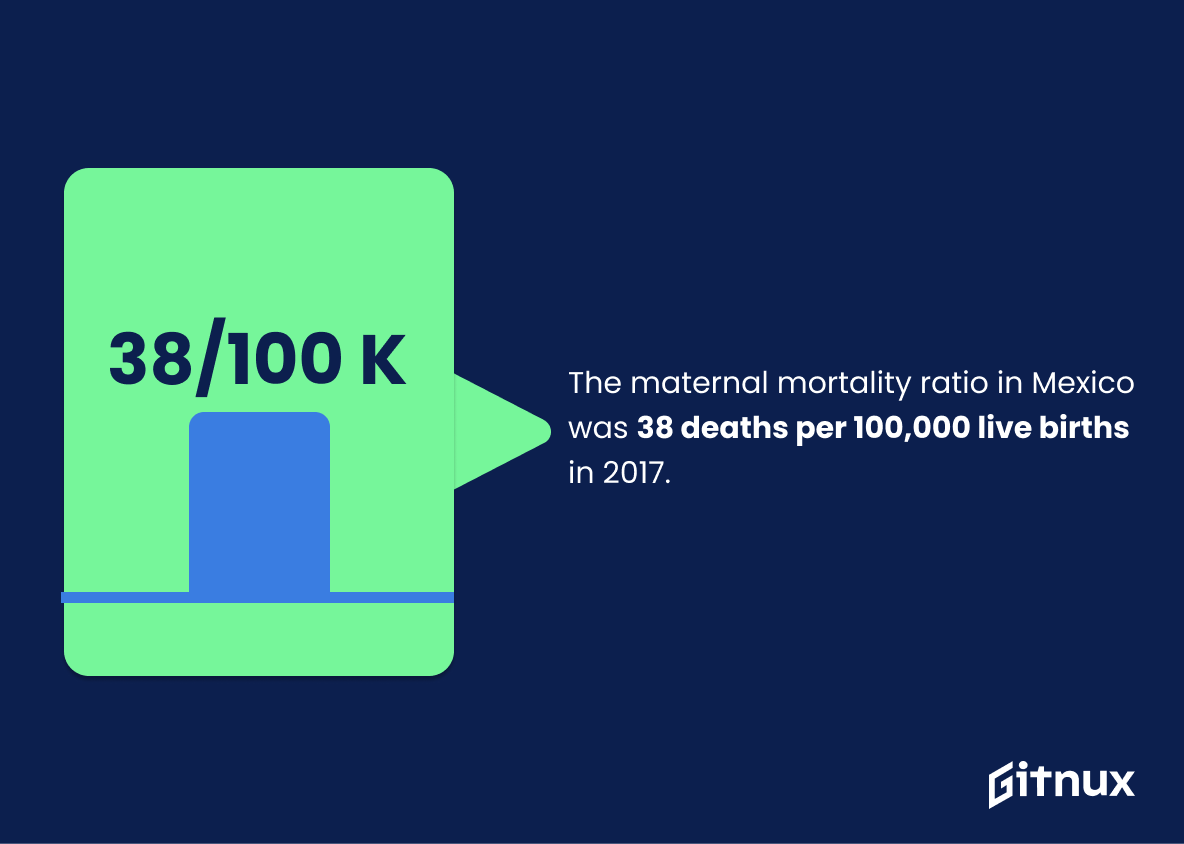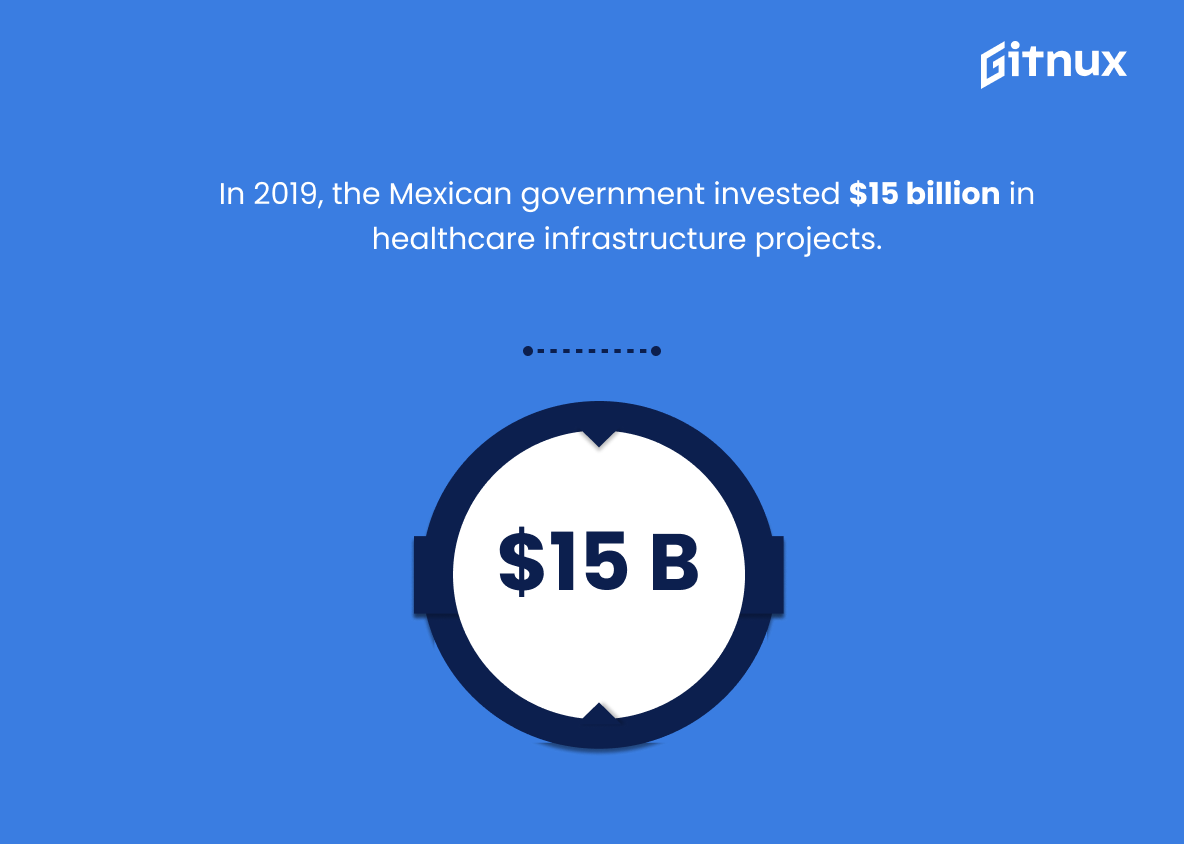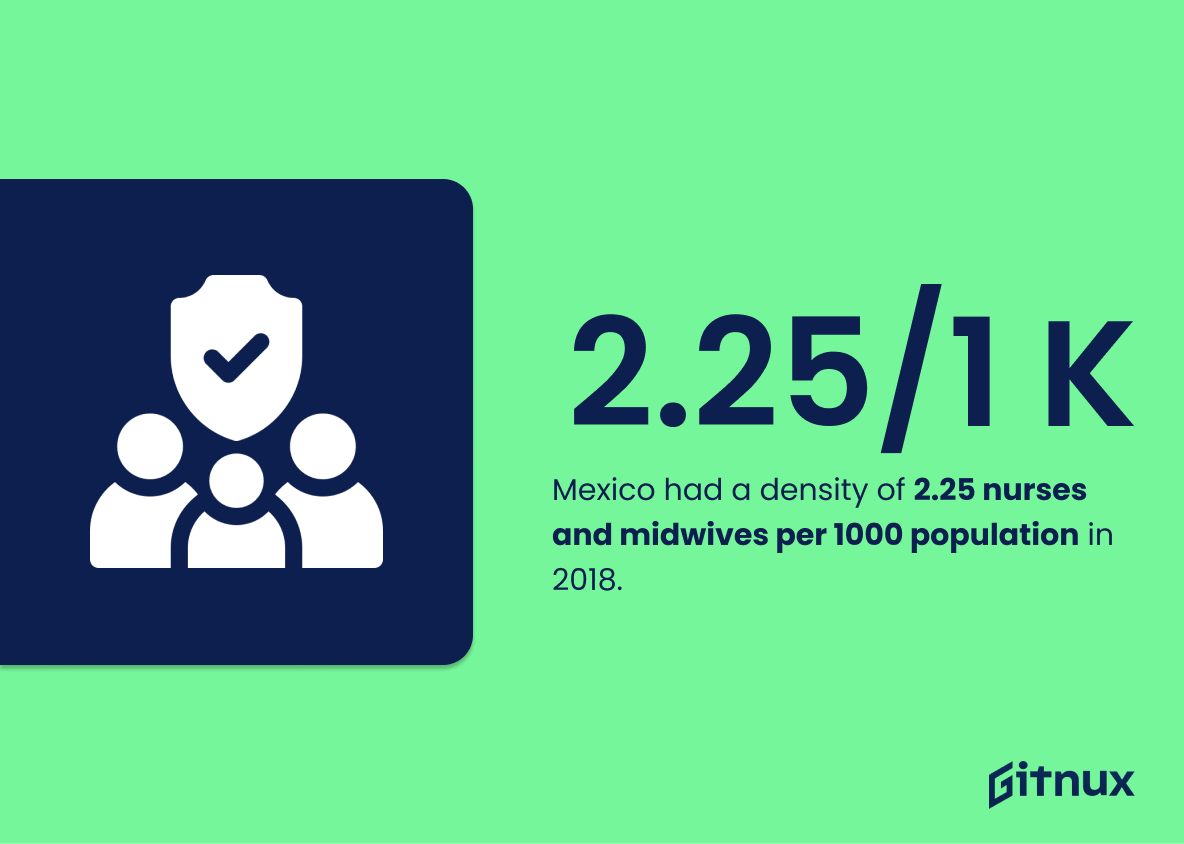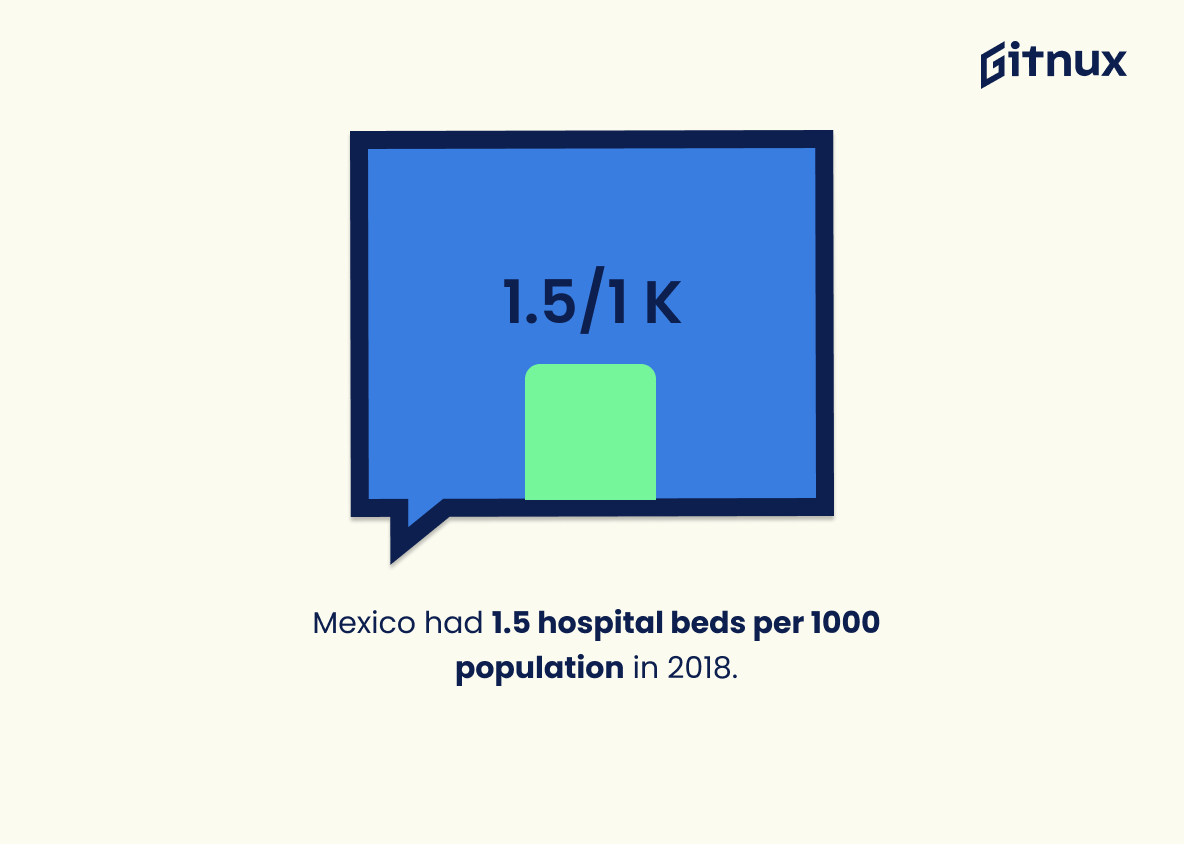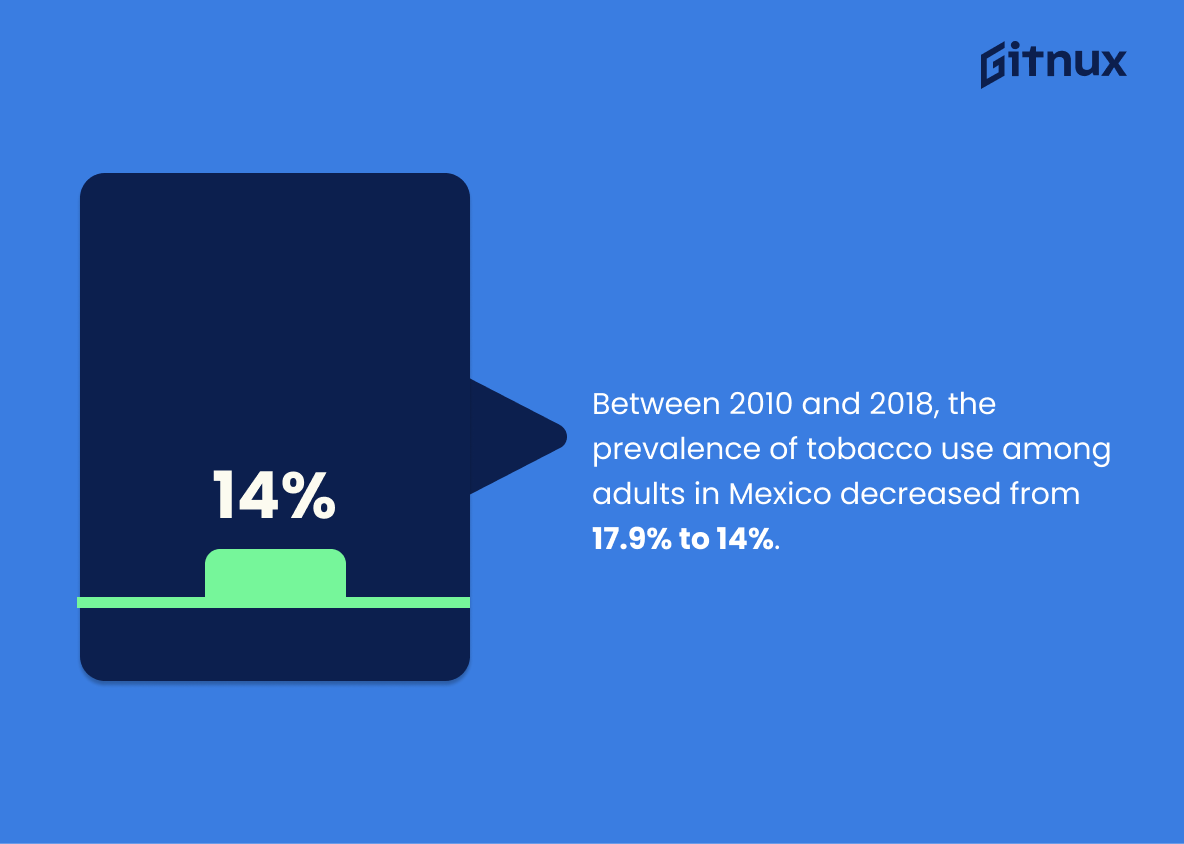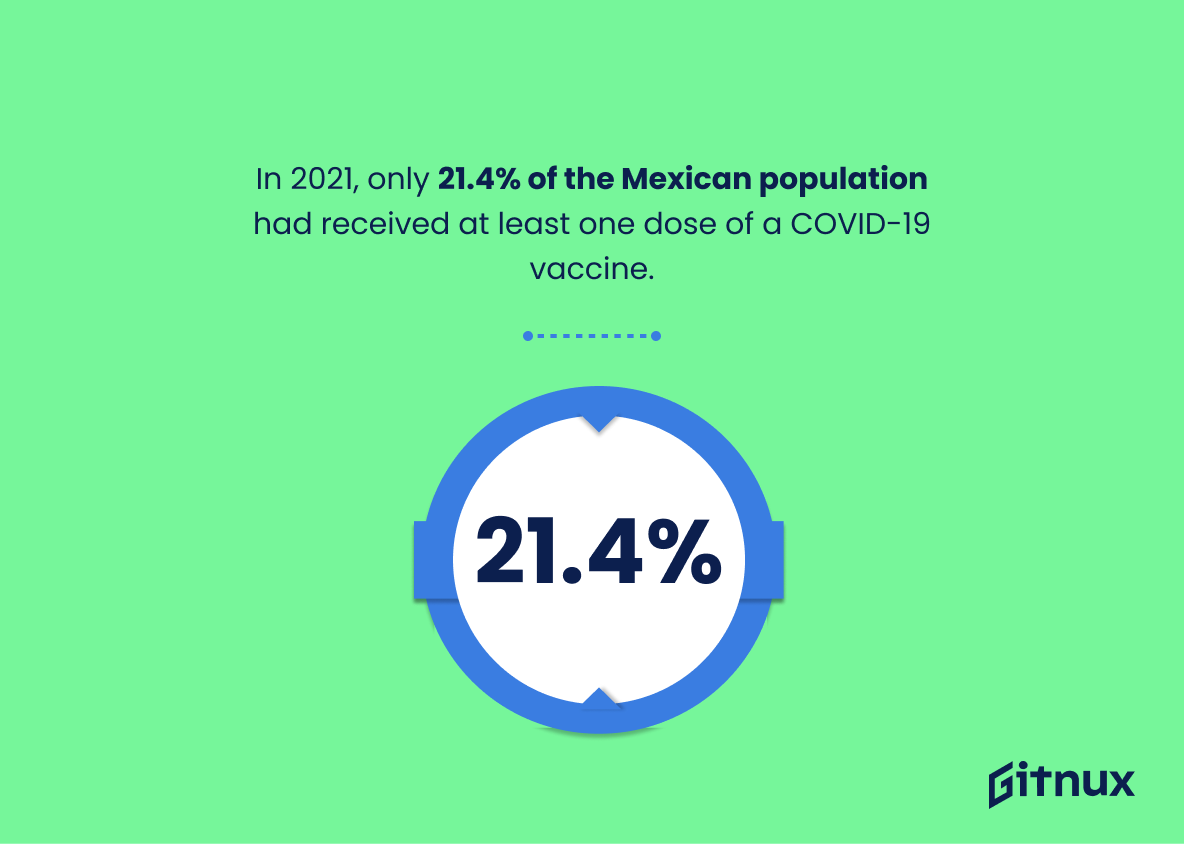Mexico’s healthcare system is an important part of the country’s overall economic and social development. In this blog post, we will explore some key statistics related to Mexico’s healthcare sector in order to gain a better understanding of its current state. We’ll look at data on spending as a percentage of GDP, global rankings for quality and access, government spending on health care relative to total expenditure, doctor density per 1000 population, life expectancy at birth, infant mortality rate, diabetes prevalence among adults obesity prevalence among adults health insurance coverage rates maternal mortality ratio investment in infrastructure projects nurse/midwife density hospital bed availability pharmacist density tobacco use prevalence COVID-19 case fatality rate per capita health expenditure out-of-pocket healthcare expenditures and vaccine uptake rates.
Mexico Healthcare Statistics Overview
In Mexico, government spending on healthcare comprised 51.3% of total healthcare spending in 2018.
This statistic is a telling indication of the Mexican government’s commitment to healthcare. It shows that the government is willing to invest a significant portion of its resources into providing healthcare services to its citizens. This is an important factor in ensuring that the population has access to quality healthcare, and it is a positive sign for the future of healthcare in Mexico.
Mexico had a density of 2.43 doctors per 1000 population in 2017.
The statistic of Mexico having a density of 2.43 doctors per 1000 population in 2017 is a telling indicator of the state of healthcare in the country. It speaks to the availability of medical professionals to provide care to the population, and the resources available to ensure that everyone has access to quality healthcare. This statistic is an important piece of the puzzle when it comes to understanding the overall healthcare landscape in Mexico.
The life expectancy at birth in Mexico was 74.6 years in 2018.
The life expectancy at birth in Mexico being 74.6 years in 2018 is a telling statistic when it comes to the state of healthcare in the country. It serves as a barometer of the overall health of the population, and can be used to measure the effectiveness of the healthcare system in providing quality care. This statistic is a crucial piece of the puzzle when it comes to understanding the healthcare landscape in Mexico.
Mexico had an infant mortality rate of 11.2 per 1000 live births in 2019.
The infant mortality rate of 11.2 per 1000 live births in Mexico in 2019 is a telling statistic that speaks volumes about the state of healthcare in the country. It is a reflection of the quality of care that newborns receive, and the overall health of the population. This statistic is a key indicator of the effectiveness of Mexico’s healthcare system, and can provide insight into the challenges that the country faces in providing adequate healthcare to its citizens.
18.7% of the adult population in Mexico had diabetes in 2021, according to the IDF Diabetes Atlas.
The statistic that 18.7% of the adult population in Mexico had diabetes in 2021 is a stark reminder of the need for improved healthcare in Mexico. This figure highlights the prevalence of diabetes in the country and the urgent need for better access to healthcare services and treatments. It is a call to action for the Mexican government to prioritize the health of its citizens and invest in better healthcare infrastructure.
Obesity prevalence in Mexican adults was 28.4% in 2021.
The prevalence of obesity in Mexican adults is a telling statistic when it comes to the state of Mexico’s healthcare system. With 28.4% of adults in Mexico being obese, it is clear that there is a need for improved access to healthcare services and better nutrition education. This statistic serves as a reminder that Mexico’s healthcare system needs to be improved in order to ensure the health and wellbeing of its citizens.
In 2017, 85.6% of the Mexican population had health insurance coverage.
This statistic is a testament to the success of Mexico’s healthcare system in providing coverage to its citizens. It shows that the majority of the population is able to access the healthcare they need, which is a major step forward in improving the overall health of the nation.
Mexico’s healthcare system was ranked #70 globally in the 2018 Legatum Prosperity Index.
This statistic is a stark reminder of the state of Mexico’s healthcare system, highlighting its place as one of the lowest ranked globally in the 2018 Legatum Prosperity Index. It serves as a call to action for the Mexican government and healthcare providers to take steps to improve the quality of healthcare available to its citizens.
The maternal mortality ratio in Mexico was 38 deaths per 100,000 live births in 2017.
The maternal mortality ratio in Mexico paints a stark picture of the state of healthcare in the country. With 38 deaths per 100,000 live births, it is clear that Mexico is not providing adequate healthcare to its citizens, particularly pregnant women. This statistic serves as a reminder of the urgent need for Mexico to improve its healthcare system and ensure that all mothers have access to the care they need.
In 2019, the Mexican government invested $15 billion in healthcare infrastructure projects.
This statistic is a testament to the Mexican government’s commitment to improving healthcare infrastructure in the country. It shows that the government is taking steps to ensure that its citizens have access to quality healthcare services. This investment in healthcare infrastructure projects is a positive sign that the Mexican government is taking the health of its citizens seriously and is willing to invest in the necessary resources to make sure that everyone has access to the care they need.
Mexico had a density of 2.25 nurses and midwives per 1000 population in 2018.
The statistic of 2.25 nurses and midwives per 1000 population in Mexico in 2018 is indicative of the state of healthcare in the country. It speaks to the availability of medical professionals to provide care to the population, and the resources allocated to ensure that the population is receiving adequate healthcare. This statistic is an important factor in understanding the overall health of the Mexican population.
Mexico had 1.5 hospital beds per 1000 population in 2018.
The statistic that Mexico had 1.5 hospital beds per 1000 population in 2018 is a telling indication of the state of healthcare in the country. It paints a picture of a healthcare system that is struggling to meet the needs of its citizens, with far too few beds available to provide adequate care. This is a concerning statistic that should be addressed in order to ensure that the people of Mexico have access to the healthcare they need.
In 2018, Mexico had a density of 1.1 pharmacists per 10,000 population.
The statistic of 1.1 pharmacists per 10,000 population in Mexico in 2018 is indicative of the country’s healthcare system. It suggests that there is a lack of pharmacists available to provide medication and advice to the population, which could lead to a lack of access to essential medicines and treatments. This could have a detrimental effect on the health of the Mexican population, and could lead to an increase in preventable illnesses and deaths.
Between 2010 and 2018, the prevalence of tobacco use among adults in Mexico decreased from 17.9% to 14%.
This statistic is a testament to the progress Mexico has made in reducing tobacco use among adults. It shows that the country is taking steps to improve the health of its citizens, which is a positive sign for the future of Mexico’s healthcare system.
Mexico had the second-highest COVID-19 case-fatality rate among the OECD countries as of March 2021.
The fact that Mexico had the second-highest COVID-19 case-fatality rate among the OECD countries as of March 2021 is a stark reminder of the dire state of Mexico’s healthcare system. This statistic serves as a wake-up call to the Mexican government and citizens alike, highlighting the urgent need to improve the country’s healthcare infrastructure and access to quality medical care.
In 2018, Mexico spent $1065 per capita on health.
This statistic is a telling indication of the state of Mexico’s healthcare system. It reveals that Mexico is investing a relatively low amount of money per person into healthcare, which could be indicative of a lack of resources and infrastructure. This could be a major factor in the overall health of the Mexican population, as access to quality healthcare is essential for a healthy population.
In 2021, only 21.4% of the Mexican population had received at least one dose of a COVID-19 vaccine.
This statistic is a stark reminder of the immense challenge Mexico faces in its efforts to vaccinate its population against COVID-19. With only 21.4% of the population having received at least one dose of the vaccine, Mexico is lagging behind other countries in its efforts to protect its citizens from the virus. This statistic is a clear indication of the need for Mexico to ramp up its vaccination efforts in order to protect its citizens and help bring an end to the pandemic.
The out-of-pocket healthcare expenditure in Mexico accounted for 41% of the total healthcare spending in 2018.
This statistic is a telling indication of the financial burden placed on Mexican citizens when it comes to healthcare. It highlights the fact that the majority of healthcare spending in Mexico is coming directly from the pockets of its citizens, rather than from government or other sources. This is a concerning figure, as it suggests that access to healthcare in Mexico is largely dependent on the ability of individuals to pay for it.
Conclusion
Mexico’s healthcare system is in a state of flux, with both positive and negative indicators. Healthcare spending accounted for 5.5% of the country’s GDP in 2018, while government spending on healthcare comprised 51.3% of total healthcare spending that same year. Mexico was ranked #61 out of 195 countries in 2020 Global Healthcare Quality and Access rankings, yet had an infant mortality rate 11.2 per 1000 live births as well as 18.7% prevalence diabetes among adults according to 2021 IDF Diabetes Atlas data – indicating room for improvement when it comes to health outcomes within the population overall .
In terms of access to care, there were 2.43 doctors per 1000 population density in 2017; 1 nurse or midwife per every 2 thousand people; 1 hospital bed available for every thousand individuals; and only 1 pharmacist serving 10 thousand citizens by 2018 estimates respectively . Additionally 85 percent Mexican residents had some form health insurance coverage back then , however this number has likely decreased due to economic hardship caused by COVID-19 pandemic which also resulted into second highest case fatality rate among OECD nations (21%).
The situation is further complicated by high levels poverty leading 41 % out-of pocket expenditure share from total cost associated with medical services provided during 2018 fiscal year ; 14 % tobacco use prevalence amongst adult population ; 28 % obesity rates reported at beginning 2021 ; $1065 spent annually on each citizen’s wellbeing prior coronavirus outbreak , but only 21 percent vaccinated against SARS CoV-2 virus so far despite massive investment made ($15 billion) towards infrastructure projects related improving public health sector since 2017 .
Overall these statistics demonstrate that although Mexico has achieved progress over recent years regarding its approach towards providing quality healthcare services across nation – much more needs be done order ensure better life expectancy (74 years), reduce maternal mortality ratio (38 deaths/100k live births ) & improve general standards living conditions throughout society alike
References
0. – https://www.www.who.int
1. – https://www.institute.global
2. – https://www.www.oecd.org
3. – https://www.diabetesatlas.org
4. – https://www.data.worldbank.org
5. – https://www.www.statista.com
6. – https://www.www.wilsoncenter.org
7. – https://www.www.prosperity.com
8. – https://www.ourworldindata.org
9. – https://www.www.ncbi.nlm.nih.gov
10. – https://www.www.cia.gov
